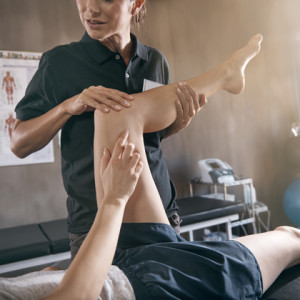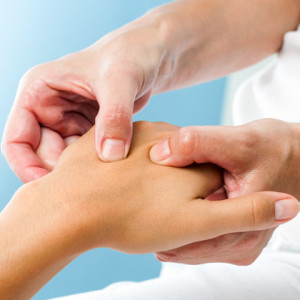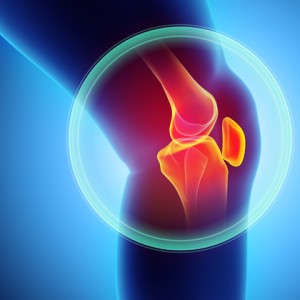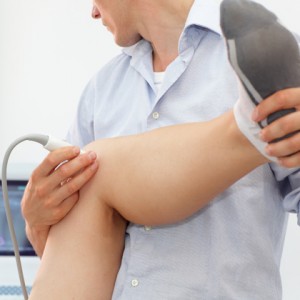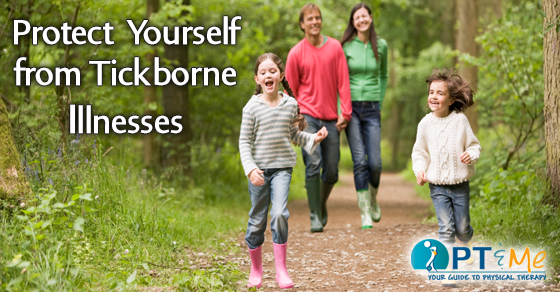
They may be small, but the bite from just one infected tick can cause symptoms that range from fever and chills to severe infections. However, you can protect yourself from tickborne illnesses, such as Lyme Disease and Rocky Mountain spotted fever, by avoiding areas where ticks are present and preventing ticks from getting on your body.
AVOID TICK HABITATS
Ticks can be found in the northeastern, northwestern, mid-Atlantic, or upper north-central regions of the United States. They are most active in warmer months from April to September. However, they can be active when temperatures are above 40°F (4.4°C).
Tips for reducing your exposure to ticks include:
- Avoid moist, shaded, wooded, or grassy areas.
- Stay on cleared, well-traveled paths, and walk in the center of trails to avoid overgrown grass and brush.
- Avoid sitting on the ground or on stone walls.
- You can discourage ticks from your property if you:
- Remove leaf litter, brush, and woodpiles from around your home and the edges of your yard.
- Mow the grass often.
- Discourage animals that carry ticks from coming onto your property.
PREVENT TICKS FROM GETTING ON YOUR BODY
Proper clothing can help protect you from tick bites when you enter areas that may have ticks. When spending time outdoors:
- Wear long pants and a long-sleeved shirt. Light-colored clothing will make it easier for you to see any ticks that may get on you.
- Tuck your shirt into your pants and tuck your pants into your socks.
- Wear a hat. Braid or tie back long hair.
- Wear closed toed shoes.
Insect repellant can also prevent tick bites. Repellents containing 20%-30% N,N-diethyl-meta-toluamide (DEET) can be applied to clothes and exposed skin. Repellents that have 0.5% permethrin can be applied to pants, socks, and shoes, but not to skin. Be sure to read product instructions carefully. For example:
- Do not apply near your eyes, nose, or mouth.
- Do not apply to children’s hands.
- Reapply as directed.
- Wash your skin when you return indoors.
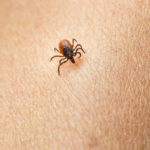
PERFORM TICK CHECKS
After you spend time outdoors in a high-risk area:
- Use a mirror to do a full-body tick check on yourself. You should also check any children who are in your care. Make sure to check for hidden areas, such as the hair, around the ears, under the arms, and in skin folds.
- Examine your clothing for ticks that may attach to you after you come home.
- Take a shower and wash your hair within 2 hours of coming indoors.
- Put clothes worn outdoors in the dryer on high heat for 10 minutes to kill any unseen ticks.
- If you have pets that spend time in high-risk areas, perform daily tick checks to prevent them from spreading to humans.
REMOVE TICKS FROM YOUR BODY
- If you do find a tick, remove it by doing the following:
- Use a pair of fine-pointed tweezers to grasp the tick by the head, as close to the skin as possible.
- Pull directly outward. Use gentle but firm force. Do not twist the tick out. Try not to crush the tick’s body or handle it with bare fingers. This can spread the infection.
- Wipe the site with an antiseptic to prevent infection.
KNOW THE SIGNS OF TICKBORNE ILLNESSES
Symptoms of a tickborne illness can occur weeks after exposure. Even if you have taken precautions, be sure to contact your doctor right away if you have recently spent time in a high-risk area and have fever and chills, aches and pains, and a distinctive rash.
RESOURCES:
Centers for Disease Control and Prevention
http://www.cdc.gov
Healthy Children—American Academy of Pediatrics
https://www.healthychildren.org
CANADIAN RESOURCES:
Canadian Paediatric Society
http://www.cps.ca
Health Canada
http://www.hc-sc.gc.ca
REFERENCES:
Preventing ticks on your pets. US Centers for Disease Control and Prevention website. Available at: https://www.cdc.gov/ticks/avoid/on_pets.html. Updated June 1, 2015. Accessed March 24, 2017.
Symptoms of tickborne illness. US Centers for Disease Control and Prevention website. Available at: https://www.cdc.gov/ticks/symptoms.html. Updated June 1, 2015. Accessed February 20, 2017.
Tick avoidance and removal. EBSCO DynaMed Plus website. Available at: https://www.dynamed.com/topics/dmp~AN~T901539/Tick-avoidance-and-removal. Accessed February 20, 2017.
Michael Woods, MD June 2017
Last reviewed June 2017 by Michael Woods, MD
EBSCO Information Services is fully accredited by URAC. URAC is an independent, nonprofit health care accrediting organization dedicated to promoting health care quality through accreditation, certification and commendation.



